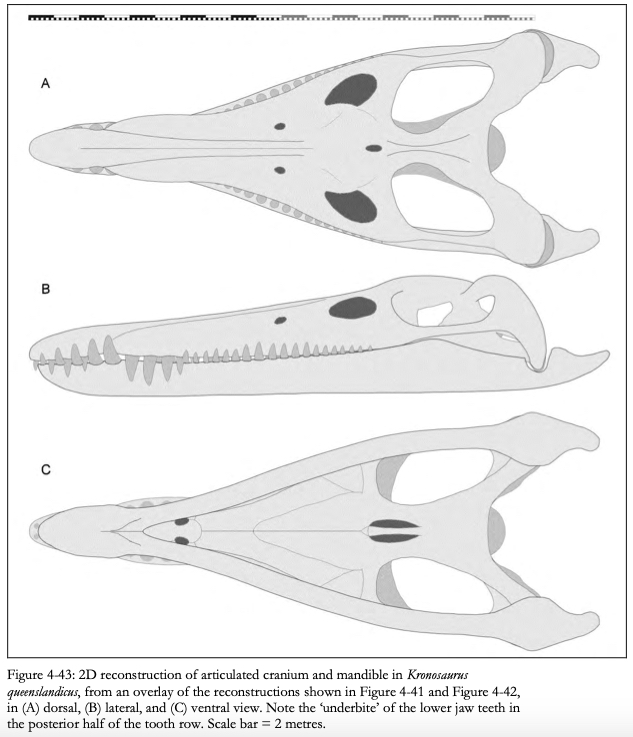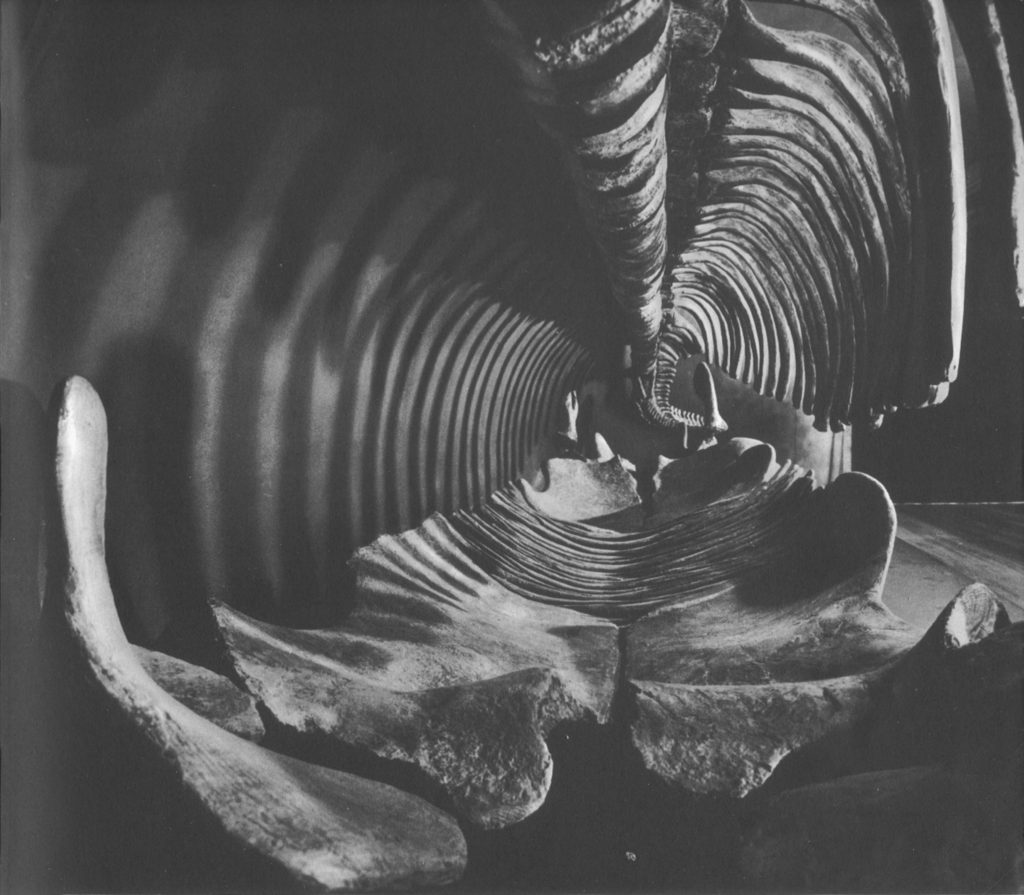Kronosaurus

K. queenslandicus
Due to its large size and ferocious appearance, Kronosaurus is one of the most famous plesiosaurs. The iconic skeleton referred to Kronosaurus on display in the Museum of Comparative Zoology in Harvard is nicknamed ‘plasterosaurus’ because so much of it is reconstructed in plaster. About a third of the skeleton is plaster and there are at least seven vertebrae too many in the dorsal region of the vertebral column. As mounted, the specimen measures 12.8m (42 feet), but the actual length would be considerably less in reality. Kronosaurus was named after the mythical Kronos who, according to Greek mythology, swallowed his five children as they were born.
There is presently only one known species of Kronosaurus, K. queenslandicus Longman, 1924 (the type species). Another species of Kronosaurus named by Hampe (1992) – K. boyacensis – was later allocated in 2021 to a new genus Monquirasaurus by Noè and Gómez-Pérez (2021).
There is also some debate about the validity of Kronosaurus itself because the holotype is non-diagnostic. Several authors have regognised this including Welles (1962) and McHenry (2005) who both suggested the erection of neotype specimens. Welles (1962) suggested that Kronosaurus should be “established upon neotypic material at Harvard University” (p.58), in other words, he thought the famous Harvard specimen (MCZ 1285) should become the neotype. McHenry (2009) recommended two specimens in the Queensland Museum as potential neotypes (QM F18827 and QM F10113) that match the anatomy and come from the same strata as the holotype.
Specifically, McHenry (2009) said: “QM F18827 preserves all of the features – premaxillary tooth count, mandibular symphysis, tooth shape and ornamentation, anisodonty of the tooth row, vertebral centra morphology – that can separate the Toolebuc Formation large pliosaur taxon from all other currently described species of pliosaur except Kronosaurus boyacenis. QM F10113 preserves a number of these features (a notable and potentially important exception is the premaxillary tooth count), and also preserves postcranial features which can distinguish it from K. boyacensis. Either of these two specimens may be appropriate candidates for the name-bearing specimen for Kronosaurus queenslandicus.”
However, an official petition to designate a neotype specimen on the grounds that the holotype is non-diagnostic was never put forward to the ICZN. Instead, Noè and Gómez-Pérez (2021) assigned the famous Harvard specimen (MCZ 1285) as the holotype of a new genus and species, Eiectus longmani. They also referred specimen MCZ 1284 to the new taxon and “provisionally assign[ed] all material previously assigned to Kronosaurus or Kronosaurus queenslandicus to the new genus” (p.6). However, this valid change has not yet been widely adopted because of the long-standing historical association between the Harvard Specimen and the name Kronosaurus in the palaeontological literature and the pervasiveness of Kronosaurus as a palaeo-pop-icon.




